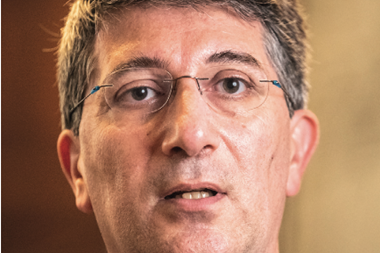Scientists have identified key industry carbon budgets in a system approach, which they claim allows “true” science-based net-zero investing.
“Our research – for the first time – identified a carbon budget for all major industries in a system approach; meaning, we did not model a single sector in isolation, but in the context of the overall energy system,” said Sven Teske, associate professor at the Institute for Sustainable Futures, part of the University of Technology Sydney (UTS).
Teske leads the work on the One Earth Climate Model (OECM), which is supported by the UN-convened Net Zero Asset Owner Alliance and other organisations.
The Alliance, whose members commit to net-zero emission portfolios by 2050 and represent $9trn (€7.8trn) of assets under management, is applying the latest UTS findings and data to inform the investor group’s target-setting protocol and reporting framework.
Peter Sandahl, head of sustainability at Nordea Life and Pension, which is part of the Alliance, said that the findings are essential for robust sector target-setting methodologies, decarbonisation strategies and guiding dialogues with investee companies.
The new UTS work calculated carbon emission budgets for 12 main industry sectors by assuming 400 gigatonnes of CO2 as the total possible release. This is in line with one of the latest calculations by the Intergovernmental Panel on Climate Change (IPCC) to limit global warming to 1.5°C with 67% certainty until 2050.
The findings can be used as benchmarks for investment decision-making. They break down the carbon budgets into so-called Scope 1, 2 and 3 emission targets for a specific industry sector and identify key performance indicators, such as absolute carbon emissions, energy intensity and carbon intensity, which investors and companies need to align with the sector decarbonisation pathways over time.
“The OECM not only aligns with the needed 1.5°C trajectory but also provides the necessary granularity and sectoral breakdowns directly applicable to the sector classifications used by the financial sector,” Sandahl said.
Other methodologies
The findings hit the market following the publication of frameworks and methodologies used by the EU and the Science Based Targets initiative (SBTi).
Teske said: “The EU taxonomy sets specific parameters for a variety of processes and industries. But it is somehow a wild collection of energy and carbon intensities with no overall carbon budget. Some parameters seem to be more negotiated than set by scientific research.
“Up until now, the SBTi, to a large extent, uses International Energy Agency (IEA) data. However, we hope that the SBTi will widen their database and that scientific research will soon be included as well,” he noted, adding that the initiative was involved in the UTS research.
According to a summary UTS paper, the IEA net-zero scenario neither provides disaggregated Scope 1, 2 and 3 emissions nor specifies all industry sub-sectors.
It also states that the IEA net-zero scenario requires -29.4 GtCO2 direct air capture between 2020 and 2050 and -89.5 GtCO2 with carbon capture and storage (CCS).
Only market-ready technologies
The new OECM research, however, does not include “nice to have” technologies – such as CCS – which is neither market-ready nor economic any time soon, Teske said.
“We only accept market-ready technologies in our technical concepts,” he added.
According to UTS, its research shows that it is still possible to limit global warming to 1.5°C and implement the Paris Agreement.
According to the UTS scientists, to achieve this the most important measures are a rapid phase-out of coal and internal combustion engines for cars. Power utilities play a central role, as they have to be able to provide enough electricity from renewable energies for the energy-intensive industries and for electric cars to be able to transition.
The latest OECM research is planned to be published in scientific literature at the latest beginning of 2022. Open-source usage for the public has been announced as well.









